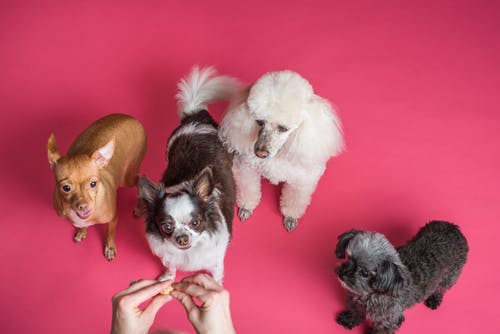
5 Ways to Keep Children and Pets Safe
Understandably, dogs have a hard time during family gatherings because of the excitement, the commotion, and the presence of unfamiliar faces. Aggressive behavior is more likely in a dog that is stressed out. According to studies, this is particularly true when an unknown youngster is involved since the dog has no experience with that child to counteract whatever weird thing is happening. “It’s not preferred to let kids and dogs together unattended, but it’s much worse when they don’t know one other,” adds Bloom.
Tips for your Kids and Pet’s Safety
Be cautious around children and pets. That entails educating and managing children’s relationships with dogs. This is vital for children who aren’t accustomed to dogs and don’t know how to engage with them. Here are five safety tips you can take to protect everyone’s well-being and safety.
1. Protect Your Pet
If you have a little or delicate dog, you need to be extra vigilant about their safety and the protection of your children. While children may be less empathetic than their peers because of their inability to regulate their bodies, the lack of motor control is also a contributing factor. In addition, there is a lack of empathy, the recognition that what affects a person may also harm an animal.
Even giant dogs have sensitive portions of their anatomy, such as their tails, ears, and eyes, which may be easily damaged or even permanently damaged by little force. You can also protect both your pet and child if you submit your pet to vaccinations. You can learn more here.
2. Safe Games Are Encouraged
To ensure the safety of both children and dogs, choosing appropriate activities for children and pets to play together is crucial. For dogs and toddlers alike, fetch is a great activity since it doesn’t need both parties to grasp a toy simultaneously. Also, since fetch teaches the dog to play with its teeth instead of on the kid, it is less likely to harm the youngster with its teeth.
In games of pursuit, the safety of children and animals may also be at risk. Getting pushed down or bitten by an over-excited dog is quite simple for a toddler. Subjecting your pet to procedures can also affect their mood and temperament. The help of a spay & neuter clinic can cause your pet to be less aggressive that other dogs.
3. Give Attention to Their Activity
No matter how well-trained the dog is, children should never be left alone with dogs, even if they are older and more experienced. There are several situations when even a well-trained dog may respond to a painful prick or prod.
All contact between children and dogs must be monitored during festivities to ensure their safety and happiness. At all times, an adult should be there to watch everyone’s behavior and ensure that the kid and dog are given time apart if they exhibit indications of stress. Instead of punishing your dog when it wants a break from you, give it an interactive toy to play with.
4. Introduction Is a Must
One of the most severe errors you can make with kids and pets is assuming they know how to deal with a dog, particularly one overstimulated by festivities and strangers. Even the greatest kids’ pets must learn how to engage with them.
If the kids don’t know doggie etiquette, teach them. Kids should learn two rules. First, people should let the dog approach them while welcoming it. They shouldn’t rush the dog or put their face in its face. As a welcome, they should extend their hands for the dog to smell. Second, show them how to touch a dog.
If you want to properly introduce your pet to your child, you need to prevent bad breath in dogs for a descent first meeting. Always remember that your child’s first impression to your pet would matter a lot.
5. Give Attention to Doggy Stress
Dogs like regular patterns and routines, so it’s understandable that celebrations might put them on edge and make them more prone to become aggressive. It’s possible that a dog that usually gets along with guests won’t while music is playing and people have already arrived at the home. This is particularly true regarding children and dogs since youngsters are prone to doing things to animals that are unexpected, harmful, or both.





